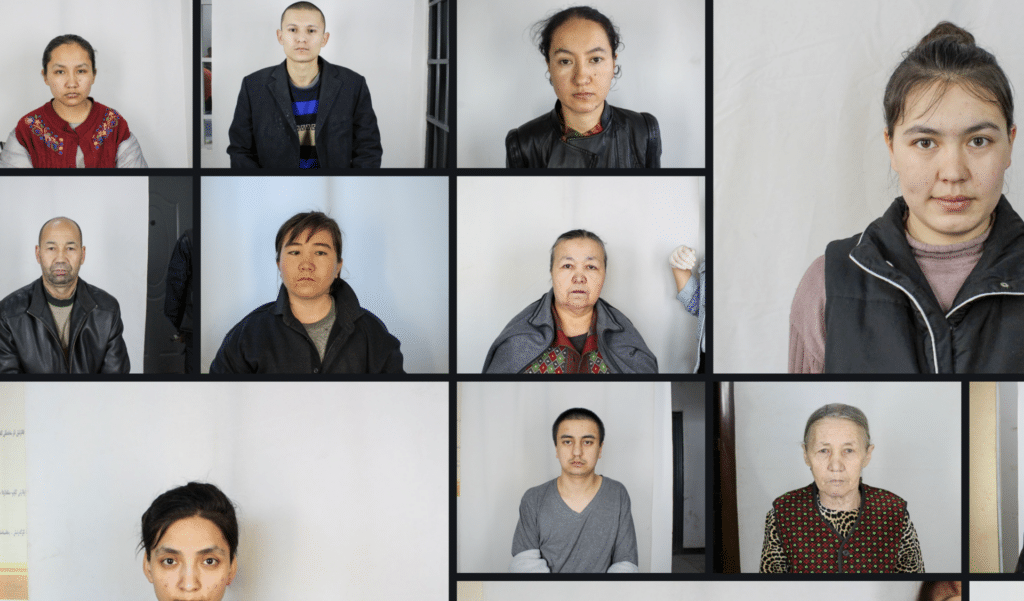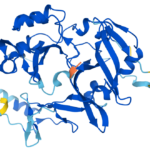Trove of leaked photos reveals China’s abuses in Uyghur detention camps
By Susan D’Agostino | May 25, 2022
 Images of detainees from the Xinjiang Police Files. Credit: Victims of Communism Memorial Foundation. Used with permission.
Images of detainees from the Xinjiang Police Files. Credit: Victims of Communism Memorial Foundation. Used with permission.
A hacker broke into a network of police computers in China’s so-called Vocational Skills Education and Training Centers, exposing files that reveal significant abuses, according to a Journal of the European Association for Chinese Studies paper released this week. The Xinjiang Police Files, as the cache is called, include a trove of speeches, images, spreadsheets, and other documents revealing widescale abuses against Uyghurs and other minority ethnic groups. The unprecedented collection provides the first images from inside the Chinese detainment camps, reveals shoot-to-kill orders from former Governor Chen Quanguo, and exposes demands for new camps from President Xi Jinping “because existing ones are overcrowded,” Adrian Zenz, senior fellow at the Victims of Communism Memorial Foundation and the study’s author, wrote on Twitter.
Since 2017, the Chinese government has detained Uyghurs and other ethnic groups in the Xinjiang Uyghur Autonomous Region. Outside observers with little access to the region have struggled to understand the nature and scale of the detentions. But a transcript of a 2018 speech given by a public security minister, Zhao Kezhi, suggests that China had interned between one and two million Uyghurs and other ethnic minorities by the late 2010s and that Xi knew of these details, according to another report published this week by Zenz.
Zenz’s paper was peer-reviewed and authenticated by more than a dozen investigative research teams at global news organizations, including the BBC and Le Monde. The credibility of the trove, Zenz also notes is “bolstered by their sheer volume; the detail, specificity, and metadata in many of the included photos; internal textual consistency; and overlap with previous document leaks.” Further, the cache “broadly aligns with witness accounts, documentary evidence, and satellite imagery that all point to internment on a very large scale.”
The massive collection contains more than 2,800 images of detainees, 300,000 personal records, and 23,000 detainee records, some of which are depicted in the BBC’s photo essay, “The faces from China’s Uyghur detention camps.” Spreadsheets indicate that over 12 percent of the 2018 adult Uyghur county population was in camps or prisons.
China has denied accusations of mass incarceration and claimed that attendance is voluntary. UN High Commissioner for Refugees Michelle Bachelet is scheduled to visit Xinjiang this week but said that her trip is not an investigation, according to Bloomberg.
“We are concerned the trip might do more harm than good,” World Uyghur Congress spokesperson Zumretay Arkin told Reuters. “China could use it for propaganda purposes.”
Together, we make the world safer.
The Bulletin elevates expert voices above the noise. But as an independent nonprofit organization, our operations depend on the support of readers like you. Help us continue to deliver quality journalism that holds leaders accountable. Your support of our work at any level is important. In return, we promise our coverage will be understandable, influential, vigilant, solution-oriented, and fair-minded. Together we can make a difference.
Keywords: China, Uyghur, cybersecurity, hacking, human rights
Topics: Cyber Security, Disruptive Technologies
















There are many reports that challenge the honesty of Adrian Zenz, who seems to be the primary source of Uyghur information for the western media. There are many reports that provide alternative information about the situation of Uyghurs and the many minority ethnic groups that live in China. It’s regrettable that the Bulletin apparently does not consult or refer to any of them.